

Metal detecting holidays in England with the World's most successful metal detecting club.
Twinned with Midwest Historical Research Society USA
Sept to Nov 2008 Archived news page |
||||||||||||||||||||||||||||||||||||||||||||||||||||||||||||
8th Nov 2008 2nd testimonial ? - Roman silver cooking update - Meteorite found Updated Forum competition page with latest milled silver tally. One the guys Cal Glen found an interesting rock out in the fields and has ground down an edge to reveal a meteorite , what a brilliant find. One of the members posted a a video link on the forum that shows you what to look for while your are out hunting. The video link is below the picture.
I have never had two testimonials in from a guy for the same trip but Idaho Orv decided to give us another write up from a total 'newbie' point of view. Our closed members forum is a great asset to any newbie coming here as months before he/she is due to hunt they can meet and greet all the old members, chat, see all the finds, museum feedback, read what land is hot and what sucks and ask any questions to help with their trip. Orv has become a very active member and joins in all the light hearted banter that goes on daily. He can also see what he missed if he was on that field himself and a monster was found later on !! Read Orv's Testimonial.
This coin has been 'cooking' for several weeks now and is very slowly revealing the detail. 5thC Roman silver siliqua of Honorius
Roman 2nd C cut half silver coin ? 1.14g, 17.45mm This Roman silver coin is probably a cut half and was just a thick crispy disc when Mass Mike dug it. I put it in the 'cooker' last Saturday what an amazing result to reveal a very pretty coin. It's always hard to tell whether a half-coin was cut for change - a very common practice in the "middle ages" as you must be aware - in fact the long-cross reverse has been said to have been continued as a major reverse type for so long because of its utility in showing where to cut... or whether any particular half-coin was broken by a plow-hit, etc.
This appears to have started out as a denarius of Hadrian - one of the "grand tour" types. Hadrian toured the entire Empire towards the end of his career. He issued gold, silver and bronze to commemorate his visits to various provinces and locales. One of the most common reverse types for these coins was an allegorical personification of "The Province" or river, etc, - whichever he happened to be honoring - usually seated recumbent, legs stretched out, by the side of the local river or framed by the local landscape. I thought I had an image of a Hadrian AEGYPTVS, or NILVS, or AFRICA denarius available to show you, but I can't find one quickly.
So I can't tell which of maybe 15 or 20 locational types this is, but from the portrait, I'm pretty sure it's Hadrian - there were some similar types issued by other emperors, too, but the general type is more usually associated with Hadrian than with anyone else.
Mark
BC Roman Republican silver coin ? 1.25g, 16.42mm Another Roman silver dug by NS Andy with very thick 'horn crust' that is also 'cooking' to reveal the detail. This Roman is laminating badly but there is some legend on the reverse. I will have to cook this some more before I seen it off for ID. |
||||||||||||||||||||||||||||||||||||||||||||||||||||||||||||
7th Nov 2008 Roman ID's back - Celtic silver recorded The coin below is one of the most perfectly stuck legends on a hammered silver Medieval penny I have ever seen. Oregon Ed dug the little beauty and then 5 minutes later pulled up a really nice Henry VIII archbishop issue half groat.
1279 Edward III hammered silver penny - class 10ab obv EDWAR R ANGL DNS HYB obv CIVI/TAS/CAN/TOR
1526-32 Henry VIII hammered silver halfgroat- cross patonce Archbishop Warham - WA by shield -Canterbury mint
Just got the feedback from Dr Phil at the Celtic coin Index on the last silver Celtic unit I sent him 'Thanks very much for this. As you probably know the type has a very Kentish distribution, so if it is of Tasciovanus – the traditional attribution – it seems to have been produced specifically to be used there. The other interesting feature is of course the inscription itself, which is often now interpreted as meaning ‘victory’ or something similar, rather than a personal name. Tasciovanus winning a battle in Kent, perhaps? I’ll record it as CCI 08.9335. There are only seven on the web at http://www.finds.org.uk/CCI/images-lister.php?&VA_type=1851.01 and although the number may have gone up a little since then, it can’t be by many – perhaps a dozen at most. All the best Philip' Facinating ID below on the mint Roman bronze coin find.
I believe you have a local, unofficial copy here. The type is the ubiquitous "FEL TEMP REPARATIO" ("to the return of happy times" or more broadly: "Happy Days are Here Again!") showing a Roman foot-soldier spearing an unfortunate, un-horsed "barbarian" or Persian cavalryman - wishful thinking at best that a Roman infantryman could unhorse and kill a Persian armored cataphract or German cavalryman - but it was a powerful bit of propaganda well suited to its times in which the Roman army was increasingly being shown not to be invulnerable to the "barbarians" on the borders or to the omnipresent antagonist in the East - the Persian Empire. |
||||||||||||||||||||||||||||||||||||||||||||||||||||||||||||
6th Nov 2008 Gold at last - more nice Romans Cal Vicie finally found gold on a new freshly ploughed and rolled plot and her husband Dave found a stonking Roman bronze with amazing detail nearby . Several of the Roman coins had enough detail to send off to our Roman coin expert Mark Lehman for an ID. The guys also found several hammered silver and a good range of do dads including some nice buttons that I will post later.
1787 George III milled gold half guinea - will straighten nicely
4thC Roman bronze sent for ID 16.95mm, 2.0g
2ndC Roman bronze sent for ID 29.98mm, 13.8g
|
||||||||||||||||||||||||||||||||||||||||||||||||||||||||||||
4th Nov 2008 Get well skunked on new land - more treasure going to inquest I just received a letter from the local coroner with the latest treasures going forward to inquest. Details posted on members forum.
The weather has been festering out there with high winds and rain. New land has been giving the guys almost a total skunking over the last few days and the odd nice find. I have just posted a load of do dads to the latest hunt page. We need to find a monster !!
1604-7 James 1st Irish hammered silver sixpence - 2nd issue obv LACOBUS D.G.MAG BRIT FRA ET HI REX 2.25g, 21.27mm
Sego 10 BC to 10 AD Silver Celtic unit Celtic silver coin found in Kent by one of our members - left with me to record properly with the Celtic coin index and obtain export license correctly - 1.34g, 14.01mm |
||||||||||||||||||||||||||||||||||||||||||||||||||||||||||||
28th Oct 2008 More page updates - Disclaimed potential treasure - Hunts start again in 3 days I just got a report back on Cal Val's gold ring find from last season. It has been disclaimed as not being over 300 years old.
2008 T265: gold ring from ‘North of Colchester’, Essex This large plain gold ring has a roughened interior which is unusual for a finger ring and suggests that it may be a fitting of some kind. In the absence of any diagnostic features there is no evidence to date this ring pre-1708. J. Rudoe During the break I have been updating the individual find pages with our latest discoveries.
|
||||||||||||||||||||||||||||||||||||||||||||||||||||||||||||
27th Oct 2008 First 5thC Roman silver find - ID help - Updates Huge updates of our latest finds onto the individual hammered silver coin pages
Tudors - Henry VII and VIII Ricard 1st to Henry III - Early hammered silver
I am still getting lots of e-mails wanting ID help with your finds. If you want help you must post them on our Foundintheground forums please so they are logged. Initial feedback on the gold piece below found by Chicago Ron is it could be from a Saxon necklace. It is currently with the British Museum undergoing tests. I have just updated the Find of the Year page.
Solid gold hanging pendant - 2.65g, 11.95mm H x 10.68mm dia x 11.68mm W - Treasure case No 2008 T596
Roman silver coin - in the 'cooker' to remove the 'horn' crust 16.22mm, 0.97g Mark Lehman just sent me back the initial ID for that 'cooking' Roman silver coin and it is our first 5thC type. I am still 'cooking' it some more to try and bring out more of the reverse detail. I have updated the cleaning tips page with more finished examples. The reason that this coin seems so thin is that it's the way they were made. The Romans were already (and had for some time been) experiencing the shortage of silver which would extend well into "modern" times (taking the long view) and was the reason that medieval deniers all tend to be such fish scales. This is a siliqua of Honorius. Honorius was one of the last of the Western emperors and the one during whose reign the Visigoths sacked Rome in 410 AD.
Honorius ascended to the purple at the age of 9, in 393 AD, so you know there was someone else behind the scenery pulling the strings. He was actually around for a pretty long time as rulers went (and they mostly went) in those days. He survived until 423 AD. but isn't known for much of anything except happening to be in power when Rome was invaded.
I'm not certain about the reverse type, but it's probably VIRTVS ROMANORVM and would show Roma seated left holding a small Victory and a scepter. Then looking at the image again, it might actually be a half-siliqua with the VICTORIA AVGGG reverse showing Victory walking left. A diameter measurement might help tell what it is (in addition to some further cleaning) - and there are other types it might be, too, it's just those are the most likely ones this could be based on what is visible in the photo.
Mark |
||||||||||||||||||||||||||||||||||||||||||||||||||||||||||||
26th Oct 2008 Break for a week - Hunts start again 3rd Nov I have a break for a week to catch up on paperwork and posting out export pouches. The hunts start again on the 3rd Nov. I have posted the last of the latest finds onto the new hunt page Oct 2008 finds page 1. I have updated the Forum competition page with the latest milled count (117) and quite a few of the guys have been knocked out of the running already. The new sites we have been hot spotting produced some really nice early Victorian silver and the rarer George IV and William IV silvers.
|
||||||||||||||||||||||||||||||||||||||||||||||||||||||||||||
25th Oct 2008 Slow to cook Roman - Important Roman bronze find This Roman silver has been 'cooking' now for 10 days and the black crud is as hard as rock. This is a very rare 4thC Roman find so I dare not 'pick' it as it is wafer thin as a coin and could break easily. Back in the 'cooker' again ! I have posted more finds to the latest hunt page Oct 2008 finds page
Slowly revealing the detail
Another interesting video which Chicago Ron took with his hat cam when his team found a Roman settlement area on new land. The long bronze piece Ron thought was pot leg cleaned up to be Roman dolphin headed knife handle, a good mornings work. Here are pictures of the other 2 finds shown in the video.
Roman dolphin headed knife handle with suspension loop
1stC BC Celtic bronze wode grinder - suspension loop type worn around the neck 51.56mm L x 10.13mm W , 12.27g
2nd C Roman red and yellow enameled 'Headstud' type fibula brooch Ref 944 p332 Hattatt's 20.72mm W x 28.82mm L 10.83g
I just got the ID back from Mark Lehman on a Roman bronze coin find I sent him yesterday, what an interesting coin.
That is a very important coin you've got there. That is just about the very first coin with a purely Christian reverse type - the "Chi-Rho" or Christogram had appeared on banners & shields on coins before this, but this is the first reverse completely dominated by a purely Christian symbol. These are typically associated with Magnentius (and his younger brother Decentius, to a lesser extent) and are also known for Constantius II. They were only minted for a short period of time - 352-353 AD.
This reverse type was issued in 3 different denominations, a "double centenionalis" (28-30mm) - which was a very short-lived denomination, only this type was ever made in that size - and also the more usual centenionalis (~22mm) and half-centenionalis (~18mm) sizes from the era after the reforms of 348.
I don't think it's going to be possible to tell which of the 3 it was who issued this one, nor the mint at which it was struck. I don't see diadem ties behind the neck, so I'm going to guess it's Magnentius or Decentius - both of them were portrayed bare-headed (and with a rather embarrassing-looking mullet-cut).
Mark |
||||||||||||||||||||||||||||||||||||||||||||||||||||||||||||
23rd Oct 2008 More great relics - £ plummets, buy your pounds now We have always prided ourselves here that we run the best value metal detecting tour in the UK as we are priced in £'s. With the £ pound dropping to 1.62 against the dollar it is the lowest exchange rate for 5 years. Our tours are now over 50% cheaper per detecting hour than the closest priced other tour and a whopping 75 % cheaper than the most expensive tours. If you are booked for the second half of the season grab them pounds now and get an amazing deal !!! Click here to check for free detecting slots and availability Just uploading a load more hammered silver coins to the latest hunt page Oct 2008 finds page Left click on picture to play Another Chicago Ron vid from the field when one of his team, Illinois Tim, finds hammered gold - James 1st 1/4 laural
1619 -25 James 1st hammered gold Quarter-laurel - 2.24g, 19.46mm 2nd coinage
Chicago Ron vid from the field when Ill Joe finds the medieval gold ring
Black Onyx Medieval gold ring 21.93mm dia, 2.51g - this is currently with the British Museum - Treasure case No 2008 T580
The guys are still slowly hot spotting the new land and it is still a mixed bag out there . Canadian Dave is another guy on fire this week and cannot put a foot wrong having already found 8 hammered silver coins including the full medieval groat and these two other great relics. The members are calling this 'season of the Newbies' as new guys are really kicking butt so far this year.
Stunning medieval gilded red and white enameled hanger 61.05mm L x 21.27mm W
17th/18th C silver thimble - maker CB - reported as potential treasure to the museum 6.51g,17.72mm H x 16.24mm dia
1369-1377 Edward III hammered silver groat - Post treaty period - North 1286 obv EDWARD DI GRA REX ANGL F FRANC (IE) rev CIVI/TAS/LON/DON London mint
|
||||||||||||||||||||||||||||||||||||||||||||||||||||||||||||
22nd Oct 2008 Brilliant wind up - New members video's - More stunning finds
Just uploaded a great 30 second video Chicago Ron took in the field of Tenn Brad when he found that stunning Medieval gold statue. 'Jesus holding a pancake ' is a great quote. Click the link below to watch it on our streaming server. Just produced another big video of the guys out there hunting which I have just uploaded to the members forum. It included the brilliant wind up perpetrated by Chicago Ron. Ron is president of the Chicago Club and brings a team of his guys here twice a year and they are all pranksters so it is an absolute blast for the two weeks they are here. Ron's team had just found another Roman settlement on new land this season, Ron got a Celtic wode grinder, enameled fibular brooch, Roman bronzes etc and after the 2nd day Ron pulls out this gilded horse statue and slaps it in my hand. Lots of **** and ***** later I thought he had found an absolute monster Roman or Celtic find. I am there drooling over it and saying what I think it might be and then Ron tell me he had brought this in a junk shop in the USA and stuck earth on it the ******, what a brilliant wind up and he fooled all of us. The video also included Cal Sarah and Ark Mary giving the guys a skunking one morning when they got a handful of silver including a Henry VIII groat!!
Ron's USA 'Roman' statue LOL
Girls give the guys a skunking and Chow time
Girls in action
Some amazing finds made that I will try and get uploaded later including a stunning enameled medieval piece and a mint silver thimble |
||||||||||||||||||||||||||||||||||||||||||||||||||||||||||||
21st Oct 2008 More great silver - Axes recorded and returned I dropped off a load of our latest treasure finds to the museum today and picked up the 2 early axe heads previously left with them for recording and ID. It was interesting to note that the palstave axe (ESS -382FB5) is a very early example dating from 1500-1400 BC and not as the usual 1250BC type as I had first thought. The 2nd polished flint axe was dated as 3500-2100 BC and is recorded as ESS-388BD4 on the National finds.org database. The guys have been finding amazing amounts of silver coins including another 3 full Medieval groats that I will try and post later. Check out the latest finds page for all the uploads Oct 2008 finds page 1.
1671 Charles 1st milled silver 2 pence
1356-1361 Edward III hammered silver groat (4 pence)- Standard F type - annulet in third qtr obv EDWARD D G REX ANGL Z FRANC D HYB obv CIVI/TAS/LON/DON - London mint 26.33mm, 4.48g
|
||||||||||||||||||||||||||||||||||||||||||||||||||||||||||||
19th Oct 2008 Latest treasures - New treasure reporting procedure Guys finished on a high Friday with a dozen silver coins and some great artefacts which I partially uploaded to the latest hunt page . Don't forget that you can also use our 'key word' searchable database at http://foundintheground.com/ to view finds. The new team in Saturday have continued hotspotting the new land and already Geo Doug pulled up a full medieval groat on a new field taking the total to 5 for this 13 field, 800 acre site.
Medieval purse bar Late Medieval to early Tudor period type B1* purse bar complete with swiveling suspension loop.
Georgian pipe tamper
The Deputy Head of the British Museum paid the guys a visit last week in the field to see them in action and to discuss new processes and procedures to streamline the finds recording and treasure processes. I now send an email to the museum as normal the day a treasure or hoard is discovered detailing any treasure find with find spot, pictures, dimensions, land owner and finder details etc. I always CC the same details to the landowner so he knows what has been found on his property but now I also include the Treasure Registrar at the BM. When the treasure case number is issued by the Registrar I am cc' d in on the e-mail so I know the treasure case number and aware it is now going through the treasure process. The BM are hoping in the future to introduce an on line system where the finder or landowner can log on and using the Treasure case number monitor the current location of their treasure in the process. Currently I have to ring the BM to find out what the latest state of play is. It was also discussed that I should have the ability to log our finds directly with the PAS data base to reduce the recording load on the local Finds Liaison Officer. I already photo all our finds and log the find spot so it would be a simple job for the FLO to check the validity of my data sent and upload it. We currently take every Roman coin including illegible grot's to the museum for recording as they are undertaking a project of all Roman coins found in Essex. These too could be input directly to save time. We also discussed other procedures to improve the export duty process with dealing with disclaimed treasures. The list below is the latest treasures logged and their case numbers supplied by the Registrar. Updated the Hoard and Treasure page with latest feedback and pictures.
|
||||||||||||||||||||||||||||||||||||||||||||||||||||||||||||
17th Oct 2008 Another amazing day on new land
1427-30 Henry VI hammered silver half groat - Rosette Mascle issue- Initial mark incurved pierced cross - rosettes and mascles in obverse legend obv HENRIC DI GRA REX ANGLIE Z FRANCE Rev VILLA CASTISIE - Calais mint 3.38g, 25.64mm The guys dug huge numbers of silver coins and artefacts yesterday which I will be posting during the day. I have reduced the size of the Sept 2 finds page and started a new finds page Oct2008 finds to speed up loading times. I have updated the forum competition page with the latest total of milled silver so far.
Roman dolphin headed knife handle with suspension loop
Roman bronze bead
Loads of great buttons turning up |
||||||||||||||||||||||||||||||||||||||||||||||||||||||||||||
16th Oct 2008 More great finds - Roman gold ? Chicago Ron found what looks to be a gold bell shaped hanging pendant possibly off a necklace. It was located in a new area we have just started hunting this week that we believe is a small Roman settlement. It's construction suggests Roman with the scrolled top edging but it could easily be Saxon. I have reported it to the museum as treasure and the British museum will ID it at a later date. I have a meeting at the museum next week to exchange treasures so perhaps they can shed some light on it's date, what a great artefact. I have uploaded more find to the latest hunt page.
Roman solid gold hanging pendant ? - 2.65g, 11.95mm H x 10.68mm dia x 11.68mm W
1490-1500 Henry VII hammered silver half groat - Class IIIc, Tun mintmark, one arch jewelled one arch unjewelled Obv HENRICUS DEI GRACIA REX ANGLIE ET FRANC DNS IBAR Rev CIVI/TAS/CAN/TOR - Canterbury mint 19.80mm, 1.57g
Interesting cross find- not sure if this is as old as it looks but taking it to the museum for their views.
Gold signet ring - Chester hall mark 1921 -4.77g |
||||||||||||||||||||||||||||||||||||||||||||||||||||||||||||
15th Oct 2008 More great finds and Romans - more testimonials added I just got a couple of real nice testimonials in from guys that just hunted here - check out their write ups here Orv sent me a picture with his Celtic I had not seen before , one cheesy grin ! The Roman silver coin found at the beginning of the week to still in the 'cooker' as the crust is as hard as rock. This silver coin is wafer thin so you cannot do any picking with a tooth pick. The detail is slowly coming through and the legend is very crisp.
I put another Roman silver coin above in the 'pot' found yesterday and this again has a thick horn silver crust on it.
Roman mid 4thC Roman silver coin - still in the 'cooker' to remove the 'horn' crust 16.22mm, 0.97g Mark Lehman has sent me the ID's of yesterday two huge Roman bronzes.
I believe you have two more Sestertii here, or what's left of them. I notice the AE you've been finding lately tends to have disintegrated from the rim inwards and/or chipped off in large hunks. The more lozenge-shaped one appears to be Marcus Aurelius Augustus (161-180 AD) with - and here it's a bit of a guess, since the attributes aren't particularly clear, but I'm going to go with a globe at the feet of our allegorical personification - that, plus the attitude in which she holds her right arm/hand and the scepter in her left would lead me to suspect that it's Providentia who often is shown pointing a wand at a globe at her feet.
If this is what I believe it to be, it's an issue from 165 AD.
The more round of the two is also, I believe, Marcus Aurelius, but on this one, he's Caesar under Antoninus Pius (139-161 AD) - what's visible of the obverse legend corroborates that, too, since a common legend would begin "AVRELIVS CAES...", of which we have IVS CAES plus the shape of the head, short beard and curly hair go with the era for him. The reverse, however, I can't make out any part of the central type, and can only see a couple vague letters of the legend. Re-orienting the reverse to what I feel is the most likely orientation - with what appears to be a "ground line" across the bottom - what the letters appear to be is [TR] POT [X?] and virtually ever sestertius of M. Aurelius as Caesar the reverse legend begins with the tribunician powers date, so that does us no good. If it cleans up at all to reveal any more useful features on the reverse, send me a new photo and I'll have another go at it. Mark
C10thC Saxon key
Just posted loads more great finds including some great hammered and milled silver to the latest hunt page Sept 2008 finds page 2 |
||||||||||||||||||||||||||||||||||||||||||||||||||||||||||||
12th Oct 2008 Romano/British settlement found Chicago Ron hunting new land has possibly stumbled upon a small Roman settlement at the top of a hill. There were a whole range of bronzey bits including several poor condition 1st/2nd C Romans, Celtic wode grinder, fibular brooch and what appears to be an early disc brooch. I have uploaded loads more finds to the latest hunt page including some great silver coin finds Sept 2008 finds page 2
1stC BC Celtic bronze wode grinder - suspension loop type worn around the neck 51.56mm L x 10.13mm W , 12.27g
2nd C Roman red and yellow enameled 'Headstud' type fibula brooch Ref 944 p332 Hattatt's 20.72mm W x 28.82mm L 10.83g
Disc brooch found in the same area - Possibly Roman but could also be Saxon - one for the museum 23.05mm ,7.02g
850BC Bronze age axe head casting waste plug 40.72g, 35.05mm L x 24.96mm W
|
||||||||||||||||||||||||||||||||||||||||||||||||||||||||||||
11th Oct 2008 More monster finds Brand new land has been skunking us again and then giving up the monsters. Illinois Joe found a stunning medieval gold ring with a black onyx stone in mint condition that I have just reported as treasure to the Colchester museum. Tenn Brad had a great afternoon with his second full medieval silver groat, long cross medieval hammered silver penny, medieval bronze beehive thimble and then a superb 850 BC Bronze Axe axe. Loads of other great discoveries were made that I have started to post to the latest hunt page. I have updated this years gold finds page
Black Onyx Medieval gold ring 21.93mmdia,2.51g
850BC Bronze Age socketed axe 79.73g, 53.86mm L x 44.24mm W
1464/5 Edward IV hammered silver penny - Type VIIi - 0.93g, 18.07mm obv EDWARD DI GRA RE ANGL Rev CIVI/TAS/EBO/RACI - York Mint - Archiepiscopal issue |
||||||||||||||||||||||||||||||||||||||||||||||||||||||||||||
9th Oct 2008 Late November hunt anyone ? - Hammered gold and more finds I am trying to get another team together for a late Nov early Dec hunt if anyone can make it, there are still a couple of free slots. We have only covered half a dozen of the 30 new fields so far and there is still huge amounts of hot spotting to be done. Of our 250 fields available we have only been briefly on a 1/3 of them so far. Illinois Tim is still on fire this trip and was searching around an old house site yesterday that is on an early map but no sign of it exists out in the field. A couple of the guys dug some hammered silver coins and then Tim found the monster, a stonking James 1st gold Laurel, what a pretty coin.
1619 -25 James 1st hammered gold Quarter-laurel - 2.24g, 19.46mm 2nd coinage I have posted a load more finds onto the lastest hunt page including some great do dads and hammered silver.
1573 Elizabeth 1st hammered silver 6 pence - Acorn mintmark 4th issue |
||||||||||||||||||||||||||||||||||||||||||||||||||||||||||||
8th Oct 2008 More stunning finds Some great finds yesterday including this magnificent silver seal matrix with double headed eagle around a heart inscription. This style is very difficult to date and could be medieval but I get a 'feel' that it is 17thC. It has been reported as potential treasure to Colchester museum and the British museum will be able to give us the definitive date later on .
Silver seal matrix – double headed eagle with heart 5.02g, 25.09mm L x (13.79mm x 10.98mm seal head) Another very rare find is this 4thC Roman silver coin, the Roman empire was broke when the last of the silver coins was issued. There were several large Roman coins found in the same area but they were all illegible. However Tim who found the silver Roman coin got one huge bronze with great detail and a female bust on it. I have put the Roman silver in the 'cooker' and sent them both off to Mark Lehman for ID and his views, I have got back the large bronze ID already posted below. Other great finds included some really crisp early hammered silver and a decorated Roman fibular brooch fragment. I have posted more finds to the latest hunt page Sept 2008 finds page 2 New
Roman mid 4thC Roman silver coin - in the 'cooker' to remove the 'horn' crust 16.22mm, 0.97g
Huge 2nd C Roman bronze coin with female bust 17.91g, 31.29mm dia x 3.95mm thick The big AE is a sestertius of Faustina Jr. She was the wife of Marcus Aurelius. The obverse reads: FAVSTINA AVGVSTA, and so it's a lifetime rather than a posthumous issue for her. Theirs was a very "fruitful" marriage and she bore a large number of children, among whom were the future emperor Commodus and Lucilla, wife of Lucius Verus. She survived almost to the end of Aurelius' reign (181 AD) dying while visiting him out on the borders in 175 AD.
There are a number of interesting "dynastic" sestertius types for Faustina Jr. showing her surrounded by her children, holding babies, etc. This, unfortunately, does not appear to be one of those. This seems to have a more prosaic allegorical personification or deity standing on the reverse. Unfortunately, this standing figure is not (visibly) holding any specific "attributes" - objects which might help us tell who it's supposed to be - or holding (visibly) her arms in a posture which might help, so we'll just have to say that it's a more-or-less generic Sestertius type. This means that we'll be unable to date it more accurately than to say it would have been issued during the time between her marriage to M. Aurelius as Caesar under Antoninus Pius in about 145 AD and her death in 175 AD. So, it's a mid-to-late 2nd century AD piece.
Mark
1797 George III cartwheel penny - cleaned using the 'Loc Plus' polishing method
1247 Henry III hammered silver voided long cross penny Class IIIc, 17.22mm,1.34g Rev ION/ONS/E(DM/VND -Moneyer Ion - Bury St Edmunds mint |
||||||||||||||||||||||||||||||||||||||||||||||||||||||||||||
7th Oct 2008 Celtic silvers are rare ones - 2000BC bronze flat axe - Lots of updates
Earliest flat axe there are 2000BC - It's size suggests it may well be a chisel or scraper 68.50mm L ,24.35mm W x 4.72mm T 30.11g The guys had a mixed day out there yesterday, a new field gave them a ton of nice buttons including some early numbered regiments and other new land produced eight hammered silver coins including a mint short cross penny and a full medieval groat. Canadian Victor has found what looks like a 2000BC bronze flat axe which is only the 2nd one we have found, they are an extremely rare find for this area of the country. It's size suggests it might well be a chisel but the museum will send it off to their experts for their views. I am backed up with finds to post but will try and get a load processed and uploaded to the latest finds page today Sept 2008 finds page 2 New I just got the mail back from the CCI recording and ID'ing the last 3 Celtic coin finds.
14.25mm, 1.32g --------------------------------------14.59mm, 1.14g Fascinating to see the two cleaned up Celtic silver coins alongside each other as they are from totally different dies but with the same design found around the same Bronze Age village site. First one is recorded as CCI 08.9325, 2nd one is 08.9326. I will send the new cleaned up pictures to Dr Philip for his further comments. The two Cunobelin silvers are very nice, and a rare type at that. The first one (West side of the Bronze Age village) will be 08.9325, and logically enough today's will be 08.9326. They are both the same type, I think - the seated figure is to the left on the second one. The only standard reference for the type is no. 308 in Spink's Coins of England, it's not in Van Arsdell or the BM catalogue. On the first one of the two you can see the amphora which the seated figure is holding quite clearly, but the CVNOBE doesn't show up too well on either. I don't have the exact figures here for rarity, but I don't think there are more than a dozen of these recorded at most. Date is perhaps somewhere in the middle of Cunobelin's reign, say perhaps c. 20-25 AD. Mark sent back the ID on that last 'cooked' roman silver. I have finished cooking it now, amazing result.
Yes, you are becoming quite expert in getting encrusted early silver looking presentable again. This is Tiberius and the coin is the so-called "tribute penny" denarius which is often associated with the passage in Matthew about "rendering unto Caesar.." etc. This has been a very successful marketing ploy and results in this type generally bringing a price far above what it should, based on its scarcity (or lack thereof).
Tiberius was a rather reluctant "heir" to the Principiate to begin with and made a distant and barely-concerned emperor. After his first few years in office, he retired to his huge villa on the Island of Caprae and never set foot in Rome again. He cared so little that he never bothered to change the types of the coins to take advantage of their great propaganda value in a time and place in which they were nearly the sole mass media. So, from 14-37 AD - a rather long rule - he continued to produce the same few types - and only this one type of denarius.
Mark
Chicago reid found the first Roman from new land and it is in remarkable condition, Mark Lehman has sent back his comments and ID, very interesting.
Remarkable Roman bronze 6.99g, 28.90mm sent for ID Interesting one . There were 2 emperors who used the name "Maximianus" - one was Diocletian's colleague Maximianus "Hercules" who had a colorful career, being emperor no less than 3 times in his life and Constantine the Great's father-in-law, among other factoids. There was also his junior colleague Galerius Valerius Maximianus, generally known as "Galerius". Galerius was Caesar under Maximian, then he was Maximian Augustus in his own right during the first of the senior Maximian's abdications. He was also one of the VERY few emperors of this era who died in his own bed (albeit from a dreadful disease).
So the issue is, when faced with a coin with the obverse legend: "...MAXIMIANVS PF AVG", which Maximian do we have here, the 1st or "2nd"? - it's one case where if he'd been called "Maximian II" it would be more useful than his given name of Galerius. So, depends on when the coin was issued - and this we must discern from the sequence marks. So, we have to approach this coin from the reverse to try tell when it's from in order to know who it is. And, Voila! this coin has neither exergual mintmark or fieldmarks to help us, plus it's the extremely common reverse type of Genio Populi Romani - well, isn't that interesting? OK, then, the obverse legend is: "IMP C MAXIMIANVS PF AVG" so we turn to the list of obverse legends in RIC VI to see which mints used that form of the name - and it turns out to be all of them, no help here either. Luckily, in the plates for RIC VI, there is a photo of a GENIO POPVLI ROMANI follis with a blank exergue and fields for Lugdunum - modern Lyon.
So, this appears to be RIC VI, Lugdunum 14b - c. 296 AD. I cannot, however, be absolutely certain that no other mint issued for either Maximian as Augustus a GENIO PR follis which had no exergual or fieldmarks - absence of evidence not equalling evidence of absence and all that - without spending an absurd amount of time turning pages in a volume over 725 pages long. The findspot being Britain, however, a Western European mint like Lugdunum is quite likely.
Since Galerius, the junior Maximian, was a Caesar at this time, this must then be the elder Maximian.
Mark |
||||||||||||||||||||||||||||||||||||||||||||||||||||||||||||
6th Oct 2008 Double Celtic coin day - Roman is cooking nicely and ID back on the bronze Posted a load more great finds to the latest finds page Sept 2008 finds page 2 New
10 to 40 AD Cunobelin Celtic silver unit - horse facing right - in the 'cooker' starting to clean it up - sent to CCI for recording and ID 14.25mm, 1.32g
10 to 40 AD Cunobelin Celtic silver unit - figure sitting, facing left - in the 'cooker' starting to clean it up, sent to CCI for recording and ID 14.59mm, 1.14g
Roman 1st C silver coin 19.19mm, 3.35g- As dug and 'cooking' nicely to remove the 'crust'- sent to Mark Lehman for ID
It was pouring with rain, high winds and really festering weather out there but it did not stop the guys finding two rare Celtic silver coins. This is an amazing result as the Colchester area is well documented for a disproportionate ratio of gold Celtic coins to other metal types . Since we started searching this area we have found 68 Celtic gold coins but only 4 silver and 5 bronze units so to find 2 in a day is staggering. These came up both West and East of our huge Bronze age village site. One the previous silver units found 3 years ago was to the North of the site so they surround the village. 99% of all the gold found was deposited as ritual offerings but did they also do the same for the silver coins when times were hard ? If you read the report we commissioned by the 40 page Sussex Archeology field unit report on this site it has all the information on the burial, ring ditches, crop marks and henges. http://www.colchestertreasurehunting.co.uk/D/desktopsurvey.htm
Stunning early medieval lead shield trade weight - Lion prancing right - first of that type we have found I managed to get an ID on that Medieval hammered silver penny find from yesterday, 1274 Edward 1st hammered silver penny - Class 3d 16.72mm, 1.04g Obv EDWR ANGL DNS HYB, Rev VILL/ABR/ISTO/LLIE - Bristol mint
That is indeed a sestertius - or what's left of one - and was issued posthumously in honor of Lucius Verus - co-emperor with Marcus Aurelius from 161 AD to his death in 169. He wasn't much help while he was alive, being more interested in the "percs" and pleasures of Imperium than in service like his senior partner Marcus Aurelius, who spent nearly his whole reign out on the borders fighting "barbarian" invaders. He was "family", however - the son of Hadrian's chosen heir Aelius who predeceased him (Hadrian), and was married to Marcus Aurelius' daughter Lucilla - so was accorded all the conventional honors, etc.
The "wedding cake" looking arrangement on the reverse is a huge funeral pyre. The Romans cremated their dead, mostly, and the more important a person, the more public and lavish the event. Those who had no real "name" but were rich, might arrange for extravagant funerals as well, to try to gain some fame after death, at least.
There were two "stock" posthumous reverses for emperors at this time, the "layer-cake" crematory pile and an eagle standing on a globe. This coin was issued by Marcus Aurelius right after Verus' death in 169 AD. Similar coins were issued for both Antoninus Pius and Marcus Aurelius after their deaths - Verus' posthumous coins are a bit scarcer than either of the other two - Verus' lackluster life and career wasn't seen as deserving more than perfunctory, if Imperial, honors
Mark
|
||||||||||||||||||||||||||||||||||||||||||||||||||||||||||||
5th Oct 2008 Stunning Medieval gold statue pendant - other amazing finds Tenn Brad on brand new land found what is probably one of us best ever artefacts. It is simply stunning and a very important discovery especially as the field it was on has never been detected before. Both the landowner and finder have generously agreed to donate this amazing find to the Colchester museum. It has been reported as treasure and will go through the whole treasure process but they will not have to hold the valuation stage. The circular disc the guy is holding had something attached to the gold pin that still remains.
Stunning medieval gold statue pendant - C13th judging by the Lombardic script on the scroll . This is probably to do with the Catholic church (DEI) and one of the members suggested FRCO is St Francis
Script reads FRCO ++SMYUNC +DEI - reported to Colchester museum as treasure 32.80mm H ,11.46g
1645 Charles 1st hammered silver shilling - Tower mint under parliament - Eye mintmark 32.09mm, 5.87g The guys were spread out thin on 6 new fields to try and hot spot them and there were some other amazing finds that I will try and post later. Can Bill found what looks like an unrecorded Medieval hammered penny in great shape, huge Charles 1st hammered shilling, a stunning huge Roman bronze, the first medieval shield weight I have seen, a 1440's gold Ecu coin weight, all kinds of knic knacks. What a great days detecting.
This coin needs a lot more work to ID it - clearly a Medieval Edward (EDWR) silver penny but it is a Villa type obv I do not know |
||||||||||||||||||||||||||||||||||||||||||||||||||||||||||||
4th Oct 2009 End of a great week - great start to the new hunt
Chicago Reid started the ball rolling on the new hunt with an early looking Roman Republican silver coin that I have put straight into our Roman silver 'cooker'. I am posting a load more finds to the latest finds page. Sept 2008 finds page 2 New
Looks like a Roman Republican silver - BC in date - got it cooking to remove crust
Stunning 1560-1 Elizabeth 1st hammered silver penny - Cross Crosslet 2nd issue
1351-2 Edward III hammered silver groat - Cross 1 Pre treaty series C Obv EDWARD D G REX ANGL Z FRANC D HYB 26.99mm, 4.38g
17thC silver cufflinks reported as potential treasure |
||||||||||||||||||||||||||||||||||||||||||||||||||||||||||||
2nd Oct 2008 Another Celtic gold found - Members forum is down - new Treasure process
The members forum is down again, http://www.forumer.com/status.php to check the status, we are No7 which is showing as down. Minnesota Mindy is tearing it up out there and is our first female member to find a Celtic gold, it is a mint example and another 50 BC Gallo Belgic full stater. This was found on the North side of our Bronze age village site and I thought is might be a die match to the one found last week by Idaho Orv on the East side of the village. This is an interesting find as the village has been primarily 45 BC Addedomaros, 10 BC Dubnovellaunus and 20 AD Cunobelin tribes and now we have had a single find of a Gallo Belgic on all 4 points of the compass around the village. I have sent it of to the Celtic coin Index for Dr Philip's views and recording. It is interesting to compare both Mindy's and Orv's to Can Dan's example which is a completely different stylized design from a new area we have just started searching. His is the first Celtic gold ever recorded in that Parish.
Mindy's Gallo Belgic 50BC Celtic gold stater 6.38g, 16.96mm
Orv's 50Bc Gallo Belgic Celtic gold stater - 17.42mm, 6.19g CCI 08.9320
Can Dan's Gallo Belic 50 BC Celtic gold full stater 6.30g, 17.59mm CCI 08.9323
1507-9 Henry VII Regular profile issue hammered silver groat - Triple banded crown - Pheon initial mark 2.90g, 27.51mm Obv HENRIC VII DI GRA REX ANGL Z FRA Rev POSUI DEUM ADIUTO(R)E MEU(M) The guys hit a new field in a small village and dug unbelievable amounts of targets, buttons, coppers, thimbles, lead and trash. The were a couple of early Victorian silver milled silver finds but mostly it was Georgian period. One of the guys said I have found this big bale seal, it was a beautiful 13thC lead seal. Lunchtime the guys split up and went to two new fields as the 'grass is always greener' LOL. Min Mindy decided that the first field showed real potential and stayed there for the afternoon session on her own. They should have listened to Mindy as they all got totally skunked and she found a stonking big hammered silver and a bunch of great buttons and do dads. Just shows the grass is not always greener on the other side and we should listen to Mindy as she is on fire at the moment.
This is an interesting piece as it is domed lead like a Medieval Pilgrims item and would have been a pendant by the hanger hole. One for the museum to look at further
|
||||||||||||||||||||||||||||||||||||||||||||||||||||||||||||
1st Oct 2008 Another early 850 BC axe head found - more stunning relics and Celtic gold ID'd Started a new finds page to speed up load times Sept 2008 page 2 New Just got an email in from Dr Philip of the CCI on the 2nd Celtic gold found this week. This was from new land in a totally different area from our normal Celtic village sites so I asked him if any others had been recorded with him in the past. This one will be CCI 08.9323, and it's definitely VA 52. I haven't heard of **** before, which is a pretty good sign that there aren't any other coins recorded from the parish. Good luck with the rest of the fields... Cheers Can Dan is still on fire and while washing up his finds last night said to me is this anything ? Yep sure is, a 850BC Bronze age socketed axe end. What is funny is he got it in the same location as his gold ring find from yesterday. You can clearly see on this example why it fractured during use as the casting thickness was very uneven.
850 BC Bronze Age socketed axe 37.04 W x 30.58mm L47.54g Some really great relics turning up which I have posted below, more posted on the latest hunt page including an unknown medieval hammered silver coin Sept 2008 page 2 New
Medieval bronze seal ring - bearded figure sitting - 2.70g, 18.86 mm dia x 9.62 mm W
Superb find - 1st C Celtic wode grinder - 'bull head' type with broken suspension loop 44.34mm L ,7.40g
Circa 1260 AD lead personal seal , 4 have been found attached to pasture rights. The design is typical of mid 13thC non heraldic seals
|
||||||||||||||||||||||||||||||||||||||||||||||||||||||||||||
30th Sept 2008 Extra - Neat early gold ring - interesting hammered silver - more land I met with the farmer this morning to exchange contracts on the new land that we were offered this week, I was surprised when he gave me the maps of his land that he also has another half a dozen extra fields to for us to explore. More details on members forum. I have updated the land overview/availability page. I have posted more finds to the latest hunt page, also I am constantly updating our photo albums on the searchable database.
Early hand made gold ring - no hall marks 1.18g, 23.26mm x 1.06mm T Two really interesting hammered silver coins were found yesterday, really nice Alexander and an unlisted Henry III voided long cross.
Scotland Alexander 1246-1286 hammered silver penny Class 4 obv - ALEXANDER DEI GRA Rev -REX SCOTORUM - King of Scotland
1247 Henry III hammered silver voided longcross penny - Class 3a This is a fascinating coin with an off stuck cross which makes it appear staggered. The Moneyer is clearly Nichole but the mint is not in C.Wren's book. Mint clearly starts VCE which his no known mint ? I will be sending this off to the hammered silver expert at the British museum for his views.
This would have been one amazing crotal bell if it was complete - never seen a cherub face on a bell - Circa 16th C |
||||||||||||||||||||||||||||||||||||||||||||||||||||||||||||
30th Sept 2008 Celtic ID back - more neat relics
50Bc Gallo Belgic Celtic gold stater - 17.42mm, 6.19g
I have just had a reply about the Celtic gold found last week which was sent for recording, here are Dr Philip de Jersey's comments I'll record this as CCI 08.9320 - as you say a very nice Gallo-Belgic stater, I think from one of the earlier classes (VA 50 or 52) judging by the continuous line under the horse. Hope it's a sign of more good things to come! All the best
Medieval seal matrix 20.22m dia , 9.34g
Roman bronze decorated Amphora strap end 44.38mm L x 23.89 W 17.23g |
||||||||||||||||||||||||||||||||||||||||||||||||||||||||||||
29th Sept 2008 Another beautiful Celtic - feedback on treasure Archived half this page to speed up load times, old news page is now 2008 June Another amazing discovery on new land by Canadian Dan in an area that no Celtic gold have ever been found before. This opens up huge possiblities as we have 40 + new fields to hot spot in this area and have only walked on a handful so far. It will be interesting to hear back from Dr Philip when he records it onto the National Database to see if any other Celtic gold staters have ever been reported from this area .
Gallo Belic 50 BC Celtic gold full stater 6.30g, 17.59mm sent to CCI for recording
Solid silver medieval vessica seal 62.1g, 21.96mm L x 18.81mm x 5.51mm W (excluding hanger) I was at the museum during and week and got some feedback on one of our treasures above that is going for inquest on the 18th Nov at Chelmsford Coroners court. The Circa 13thC silver seal has a Roman intaglio at it's centre. What a fantastic relic.
Some nice hammered silver coins found yesterday including this Crisp 1584 Elizabeth 1st hammered silver sixpence - 'A' mint mark 6th issue More finds posted on main finds page Sept 2008 finds page Got a great e-mail in from Denis Darmanin an old button collector and researcher. He has kindly ID'd a bunch of our outstanding buttons and updated others. I have updated the pages, Military, Navy and Livery with the changes.
|
||||||||||||||||||||||||||||||||||||||||||||||||||||||||||||
28th Sept 2008 Pair of Medieval beauties - New type of Saxon silver coin We have just been given permission to search yet more land around an old village that has never been detected before. The guys are going to give it a try this week. I have just received an e-mail from Dr Allen with the recording and ID of the latest Saxon silver coin find. It a new variety of the Vernus type, what a superb find. That came from our first hit on a new field so it is well worth a return visit to see if we have found a good Saxon area.
'Many thanks for this interesting new find, which I have recorded as EMC 2008.0410. This seems to be a new variety of the Vernus type, with an inscription reading VE[N?]VEO. It does not really belong to any of the varieties of the Vernus type described in Michael Metcalf's Thrymsas and Sceattas. Regards' Martin Other new land we have just started searching produced two stonking Medieval groats. These are particularly interesting as they are both Henry VI, one is the annulet issue and the other Rosette- Mascle. This site is also well worth a return visit as there were tons of other dod dads, trade weights, thimbles etc.
|
||||||||||||||||||||||||||||||||||||||||||||||||||||||||||||
27th Sept 2008 Another cracking find Yesterday was amazing, guys split up on 2 plots of new land and both came up trumps. Loads of do dads, milled and hammered were found and it included two full mint medieval groats. I have not cleaned them up yet and will post later. Idaho Orv who has been on fire on his first trip here found another stonking find, mint Saxon silver coin. This is a very important discovery being the very first Saxon period item from this entire new area. On the same land Orv also got a really crisp Roman bronze with a obverse I had not seen before. Mark Lehman has just sent me the ID and write on the coin and it is classed as 'scarce'. I have sent the Saxon silver coin to be recorded and ID's to the National Early Corpus database at the Fitzwilliam museum, they will issue the coin with a unique EMC number and tell us the class. More finds uploaded to the latest finds page Sept 2008 finds page with tons more to post today.
Saxon C600 - 775 AD Silver Sceat sent to Fitzwilliam museum for recording and ID 12.08mm,1.25g
4thC Roman bronze sent for ID I know this one on sight - and it's actually fairly scarce. This is the short-lived emperor Magnentius. You can easily recognize him and his brother by their distinctive and somewhat silly-looking mullet hair-do's. An interesting footnote to the period of Constantius II's reign, Magnentius had been a general of Constans'. Around the time Constans died in 350 AD, Magnentius had recently been proclaimed emperor by his legions and his authority was widely accepted in Gaul and other Western Provinces, particularly in the power-vacuum caused by Constans' demise. He named his younger brother Decentius Caesar in the spring of the next year - 351. Their rule was meteoric and brief, with both of them commiting suicide after a string of lost battles in 353.
If, as you say, it's "like a typical 3rd c size" (and I'll assume you really meant 4th century here) this would be a somewhat lightweight Centenionalis, or possibly a half - RIC says "20-21mm & 5.07gm for average size & weight and doesn't list a normal half-piece, but it's not unusual for them to be found a bit on the smallish side. This reverse, GLORIA ROMANORVM, with the ruler spearing an unfortunate "barbarian" enemy from horseback, was struck only for Magnentius and not for his younger brother - and only for a short time.
This piece is from the mint at Lugdunum - modern-day Lyon in France - and dates to the period before the elevation of Decentius, so it's pretty solidly dateable to January 350 - Spring 351.
RIC Lugdunum 115, LRBC 214, SR 4021.
Mark |
||||||||||||||||||||||||||||||||||||||||||||||||||||||||||||
26th Sept 2008 Lots of skunking and some great do dads Latest news from around the county Ancient’ Christian amulet exposed as modern hoax RARE COPPER AGE AXEHEADS DONATED TO MANX NATIONAL HERITAGE
Roman Republican Denarius - moneyer: M Aburius M.f. Geminus, 132 B.C.
I dropped off the latest axe heads finds to the museum yesterday for recording and evaluation and discussed the finds with two of the Bronze Age experts. They were uncertain if the holes in the axe were cast that way or just casting faults. The axes will now go off to the british museum is further analysis. I picked up the disclaimed treasures and the Roman coins left for recording, these can now be returned to the finders. Details on members forum The last couple of weeks detecting has been a really mixed result. New land has been giving us the monsters and then kicking us to death. It is really exciting being on plots that have never been detected before but these new 35 fields are impossible to grid, we just have to luck out. Yesterday we were next to Celtic village and I had to hide the razor blades from the guys as man did it suck big time !!. The guys today have picked a new field behind the Pilgrims fathers house dated 1570, lets hope they had a bar-b-que before they set off to America and dropped loads of do dads !! There were however a couple of really great do dads, a superb uncrushed Medieval lead pilgrims ampullae and a mint condition 119th French regiment of the line Napoleonic button. The medieval decorated box chape is a rare find. I have uploaded a load more finds including an unusual number of crude rings, some with stones and what look like diamonds. Sept 2008 finds page
East Anglian Type - IC stands for Jesus Christ - 54.25g, 49.34mm H x 31.73mm W x 13.94mm T Pilgrim ampullae - holly water bottle made of lead 12th to 15thC, These ampoule were brought from pilgrimage places as a souvenir Mitchiner suggests that many ampullae were used in the annual springtime ’Blessing the Fields’ ceremony, in which the Holy Water they contained was sprinkled on the ground to give prayer for a good harvest. Having served this purpose, Mitchiner suggests that the ampullae were discarded. Others have suggested that the ampullae were buried along with their contents for a similar purpose.
French Infantry Button
119th Line Regiment Circa 1803-1814
Early Medieval decorated buckle with integral box chape |
||||||||||||||||||||||||||||||||||||||||||||||||||||||||||||
23rd Sept 2008 First Celtic gold of the season What mint pure gold example of a Gallo Belgic full stater found by Idaho Orv, first Celtic of the season and an amazing discovery. I have sent it off to Philip at the National Celtic Coin Index for recording and his views on die type.
50Bc Gallo Belgic Celtic gold stater - 17.42mm, 6.19g sent to CCI for recording This coin weight is very interesting as it looks like a bronze Roman coin but is a 15th coin weight.
15thC half Ryal coin weight - 15.90mm, 4.01g-61.9gn Uploading more finds to the latest finds page. I have updated the forum competition page with the latest milled silver count |
||||||||||||||||||||||||||||||||||||||||||||||||||||||||||||
22nd Sept 2008 Getting skunked - more Roman ID's A lot of the new land is giving us a real good skunking as we try and hot spot it. However certain areas are producing sparse numbers of Roman coins but they indicate a good date spread so far with 300 years of Roman occupation. I just got an ID back on couple we found yesterday. I have posted a load more finds to the latest hunt page.
Interesting Roman period decorated stirrup looking plate - traces of silver gilding remains- one for the museum
25.23mm, 5.48g Another damaged, fragmentary and probably mineral-leached As. This one appears to be Antoninus Pius again- 138-161 AD - and the reverse has a standing figure, if you know which way to align it. I believe the standing figure of which we see the middle of the torso is Antoninus himself, togate, and sacrificing over an altar which is not quite visible to the left of the "S" from the S - C in the fields.
If it's the type I think it is, it dates to 148 AD.
|
||||||||||||||||||||||||||||||||||||||||||||||||||||||||||||
19th Sept 2008 Treasure and more silver I reported this potential treasure item below to Colchester museum and first impression is that it could be 16th Tudor. A couple of the guys on the members forum have suggested it is a rosery hanger, could well be as it was found near an Abbey. I am picking up the Roman coins left at the museum for recording next week and will be dropping down the two early axe head finds for recording and evaluation. The museum are also picking up the disclaimed treasures from the British Museum this week for returning to the finders. I have posted a bunch more finds on the latest hunt page
Gilded silver item - possible rosary hanger - 22.34mm L x 19.57mm w, 3.29g
I got an ID today for yesterday's Roman bronze coin find from Mark Lehman.
It's smallish, weight-wise, for this, but the diameter is in the right range for it - I'm pretty sure it's a Sestertius of Trajan.
Or, let me put it this way - I'm sure it's Trajan (98-117 AD), but there is some room for questioning the denomination, since as a Sestertius it should weigh in the vicinity of 20+gm.
14gm is a bit on the heavy side (but not completely out of the question) for an As or Dupondius, but the diameter is really too large for either. Also, on a Dupondius the bust would have a radiate crown - this specimen has a laurel-wreath. Asses tend to be a bit lighter than Dupondii, hence it's even less likely to be an As, but it "works" best as a lightweight Sestertius.
Mark
I also got the ID back from Mark on the latest copper Roman found.
4.78g,25.46mm The size indicates an As or a Dupondius - a Dupondius, however, like a Sestertius, would have been made of "orichalcum" - a naturally-occuring and not-necessarily consistent form of brass. The Romans did not recognize zinc as a separate metal and lacked the technology necessary to make brass from elemental copper and zinc in controlled proportions even if they had been aware of zinc. Orichalcum, like brass in general, tends to do better under wet and otherwise corrosive conditions than copper. Asses, however, were made from nearly pure copper. The weight of this specimen is way outside of the standard deviation - way too light even for the underweight local copies of Imperial Roman coins. It has obviously lost in the vicinity of half of its original weight to corrosion and/or mineral leaching.
I can't be certain whether it was originally an officially issued, or a contemporary copy of an Imperial As, but the portrait seems to be of Antoninus Pius. I doubt it could be anyone else, since his short beard can appear like a bare chin. Imperial beards came into style with Hadrian and all emperors after that time were bearded, right up through the time that copper Asses became very scarce and went out of use in the early-mid 3rd century - usually all had beards long enough not to be mistaken for a bare chin but Pius is shown with his beard very short. The shape of the head is just not right for Trajan or any of the Flavians, nor is the style right for any of the clean-shaven Julio-Claudians.
Mar |
||||||||||||||||||||||||||||||||||||||||||||||||||||||||||||
16th Sept 2008 Great silver finds A great day for silver yesterday with 2 full Medieval Groats, both short cross and long cross pennies plus a rare George II silver love token. The Henry III voided long cross has a unrecorded bust type with double pellet beard on a class 1b with crescent and moon type initial mark. What a rare find. I have just posted more finds to the latest hunt page Sept2008 including a real nice Roman bronze with an interesting bust that I have not seen before.
Huge 1st Roman bronze, just sent it off for ID 32.57mm, 14.43g I have finished cooking the Roman silver coin find and it came out really great but unfortunately a crack has developed. I will be taking it too our goldsmith to see if he can use some silver solder to repair it. Still what a transition from it's as dug condition.
Before and after 'cooking' shots of a Tiberius Denarius 14AD
|
||||||||||||||||||||||||||||||||||||||||||||||||||||||||||||
15th Another monster axe head find - Roman is 90% cooked Texas Rob eyeballed this amazing 3500 BC Neolithic axe head on new land yesterday. The workmanship is superb to be able to polish this to such a sharp edge, I wonder if the guy that made it specifically picked that piece of flint for that pretty central change in strata. The guys also found some other great finds like a Roman protected loop terret that I have be posted on the new 2008 hunt page. Mike got that full Edward III Medieval groat below. I have updated the forum competition page with the milled silver tally so far, I have 2 more to upload making a total of 16 as of today.
3500 BC Neolithic flint axe 78.52mm L x56.74 mm L
As dug
'Cooking'
Almost cooked I spent some serious time yesterday afternoon cooking and picking at the Roman silver coin find and was mint under the crust. I have it back in the cooker to clean up the rest of the bust. I sent pictures off to Mark Lehman and he has sent back this ID for us.
This is a Tiberius Denarius of the so-called "Tribute Penny" type - reverse is Livia (his mother, the presumed poisoner of many of the Julio-Claudians) seated right. This was virtually the only type of denarius issued by Tiberius over his long reign from 14-37 AD. You have had at least one specimen of this type before, about which I wrote at some length if I recall correctly, so I would refer you to my earlier description and explanation of the type.
Mark
1351-2 Edward III hammered silver groat - Series C, mint mark cross 1, Letters C & E closed - Lombardic M obv E ***** DG.REX.ANGL.FRANC.**** Rev CIVI/TAS/LON/DON - London mint 27.7mm, 4.08g |
||||||||||||||||||||||||||||||||||||||||||||||||||||||||||||
14th Sept 2008 Mike finds first piece of gold and sets the coin count at 93
Solid silver medieval vessica seal 62.1g, 21.96mm L x 18.81mm x 5.51mm W (excluding hanger) I received a letter from the Coroner yesterday detailing a number of our treasure finds, including Gene's stunning silver vessica seal, are going forward to inquest on the 18th Nov, more detail on the members forum. You should also have received the official letter through the post by now detailing your find. The end of the first weeks hunt sees Atlanta Mike setting a very high score to aim for to win the 'coin hunter of the year' award with a total of 93 coins. Mike is here for a 2nd week so the clock is now reset on his total. Trying to hot spot all this new land, around 35 fields, is really hit and miss at the moment and we are either getting well skunked or as with Don's axe head, finding a monster. Some of the best looking fields around old churches are giving us squat and fields in the middle of no where are coming up trumps !! Mike managed to find the first gold item of the season with a neat Victorian necklace clasp , he also found a monster cow bell (large crotal) on a huge field on new land.
Victorian Gold jewelry clasp (Reading's patent) - Victorian silver pendant Birmingham 1898 hallmark
Huge decorated 18thC Crotal bell next to the gold clasp for size Some of our best fields fortunately have just have been ploughed and the farmers as just waiting for them to dry out and then they will be rolled, possibly today.
The 3rd stage of the 'cooking' of the Roman silver coin find - head is starting to appear slowly as the grunge melts off. Back in the 'cooker' for some more ! A good tip to this 'cooking' is to replace the olive oil and lemon juice with a fresh mix as it gets saturated with the particles falling off. |
||||||||||||||||||||||||||||||||||||||||||||||||||||||||||||
12th Sept 2008 Illegal Tudor tavern ? Trumpet brooch I have posted a few more finds on the 2008Sept hunt page
Other examples of tokens not found here 'Instruments of trade, or merchant's marks, are found in small quantities; ditto drinking utensils, presumably indicating tavern tokens, and birds, animals and trees of various descriptions. Depictions of loyalty, in the shape of crowns, roses and the like, are not uncommon, but are usually associated with the Elizabethan period'.
13.74g, 31.75 H x 16.79mm W This is a fascinating Roman brooch find , it has a trumpet brooch style front mounted on a plate brooch type fitting. It is not in the Catalogue of Ancient brooches so one for the museum to evaluate further and record.
As dug
First 'cook' The Roman silver coin find from yesterday is still cooking and the crust is coming off slowly and detail coming through. |
||||||||||||||||||||||||||||||||||||||||||||||||||||||||||||
11th Sept 2008 Fl Don finds a monster - Mike does the double Don was hunting new land by a road and was hitting a few tin cans and thought this was just another one when it blew his headphones off. It was a good job he dug it as this axe, apart from the axe hoard found by Mass Bruce, is the best condition Palstave complete axe we have found. Circa 1250 BC ref Norwich fig 97. I spoke to the museum quickly as it appears to have two rivet holes on the flange to pin the handle which is unknown. Their Bronze age expert suggested that these might be casting holes so it will be interesting to hear his feedback once he has a chance to play with it in the flesh. What a stunning find. Don also found an early Roman crusty silver coin that I have put straight into the 'cooker' to start clean it up. I have posted it and a few other do dads to the new hunt page and will do before and after shots.
1250 BC Middle Bronze age Falstave axe 134.9mm L x 58.34mm W - 330g I got an e-mail in from export duty on the current progress of the last of the export licenses, details on members forum. Mark Lehman is still working on the ID of that Republican silver Roman find we finally 'cooked' last month. I have spent a fair amount of time looking for an ID on that silver you "cooked" for such a long time. I was hoping that the "bowed" shape on what you're calling the obverse would correspond to something in the Republican series - and I have been through and through the listings of Republican and Imperatorial types, so far to no avail. I will keep it in mind and I'm pretty certain I'll stumble over it eventually. I seriously doubt this is an Antony issue, as I seriously doubt that's a galley - but given that I can't come up with anything better, I suppose you can call it whatever your imagination makes of it for the time being. I do still think that it's a Republican or Imperatorial era issue but am stumped for a positive ID at the moment.
Good luck with this year's digging!
Mark
Mark also supplied his views on the first Roman coin find off the new land.
Roman bronze 21.64g, 33.15mm
From the size and weight, it's a sestertius. From the outline and what I think I make of the letter-seriphs, it's Antoninus Pius. I can't really say much more about it with no reverse visible and none of the obverse legend clearly readable.
Mark
Tim Burton the button expert is in the process of moving house at the moment so his books are packed up. It will be a while before he can get to the Military and Navy button ID's
More new land produced it's first hammered silver yesterday which was a worn Elizabeth 1st hammered silver three pence. Not much else was found so the guys moved to another new site in the afternoon. Pickings were really slim as these fields are monster sized and you just wander around aimlessly hoping to walk over it. Mike however managed to find his 2nd silver of the day a Medieval hammered silver penny next to an old house site that Canadian Rod had previously researched. |
||||||||||||||||||||||||||||||||||||||||||||||||||||||||||||
10th Sept 2008 Great day out there The weather and ground conditions are just about perfect out there and we are getting real deep signal and lots of Georgian copper finds. New land finally produced it's first hammered silver yesterday and Ark Gary did the triple hammered silver in the afternoon. His Henry VI groat is just about mint. Atlanta Mike banged in 20 + coppers and a really nice Saxon gilded mount, Gary found a Saxon harness cheek piece so a good range of dates so far. I am posting more nice do dads to the new hunt page this morning. A button find from yesterday turns out to be our 2nd unrecorded example of the 13th Light Dragoons.
'Still unrecorded, but I have it in my book as the below' Tim 13th Light Dragoons
|
||||||||||||||||||||||||||||||||||||||||||||||||||||||||||||
9th Sept 2008 NS Greg's memorial placed - pickings are still slim The guys have placed a lasting memorial on the field where a club member NS Greg died last season with his digger still in hand. He will be sorely missed by all the members. I have produced a video of the event and posted it on the members forum.
Florida Don places the plaque on behalf of the club
The new 1/4 pounder 'burger' day got the thumbs up from the guys and Atlanta Mike constructed his own special recipe version with fried onions, mustard and chicken flavoured crisps !!. Ark Gary presented Billericay Mark with the Wayne Otto award for showing the best attributes of any detectorist during last season. A very popular winner. The video is posted on the members forum.
We are still struggling out there on new land to find the hot spots. 6 new fields that have never been detected before have just come on line and the guys took a field each to cross. A kind of mixed result, two 1st Romans in poor shape, early Victorian silver shilling, lots of Georgian coppers including a George III silver shilling forgery.The best find by Atlanta Mike was 3/4's of a Roman fibular brooch. All the usual bits and pieces, seals, buttons etc but no hammered silver yet. I thought however this military silver overlaid button find was a real beauty and must have been individually made for a high ranking officer. I think it is the Life guards regiment but have sent it off to our button expert for his views. It has 'London make' as the backmark
I have started a new hunt page, Sept 2008 and started to upload some do dads to it but pickings are slim so far. New archived news links
English Saxon gold coin found Double Cunobelin Celtic gold Chicago Reid's Roman gold ring NS Andy's Saxon strap end Medieval Iconic gold ring find First Celtic gold of the season Celtic Woad cosmetic grinder and Jeff Roman Pecker find Viking silver strap end- Rare Roman silver coin finds Great Saxon silver finds Offa Rex - Coenwulf - Hammered gold Villa Dig - Roman gold - Celtic gold hoard found Can Majos and Mass Bills gold rings - Texas Dave's hammered gold Roman gold coin - Mass Bruce's axe hoard 2000BC Axe - Boston Buds Saxon gold michelle@colchestertreasurehunting.co.uk
|
||||||||||||||||||||||||||||||||||||||||||||||||||||||||||||


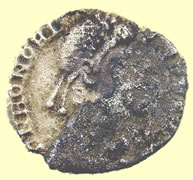
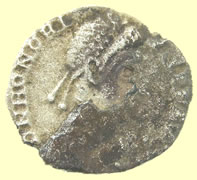

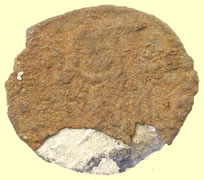
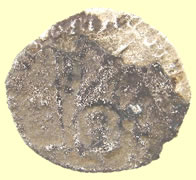
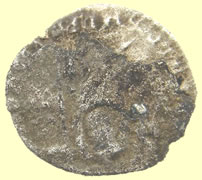
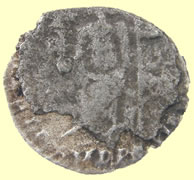
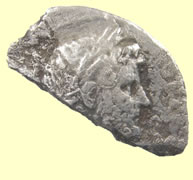
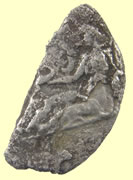
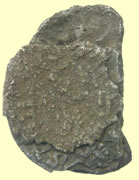



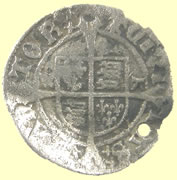
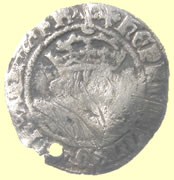
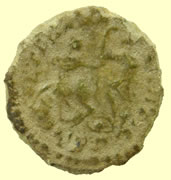
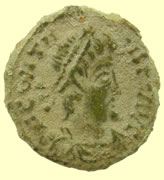


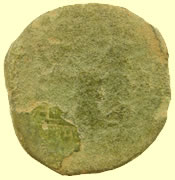
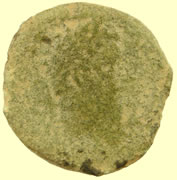
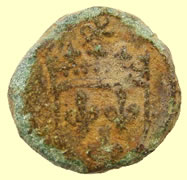


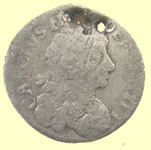



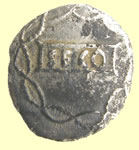


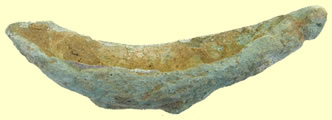


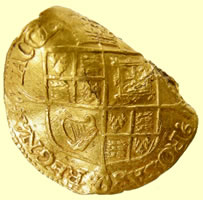
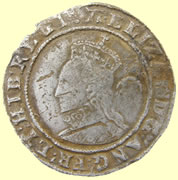
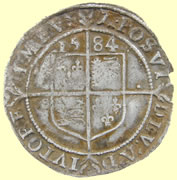


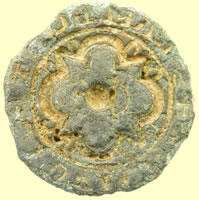

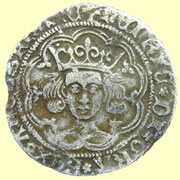


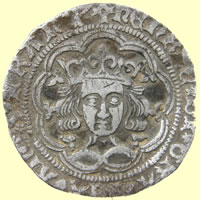
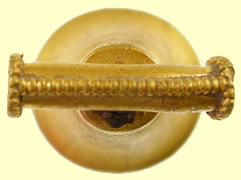
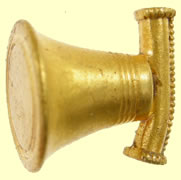
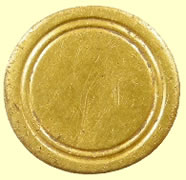
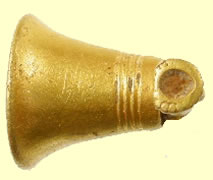

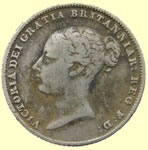


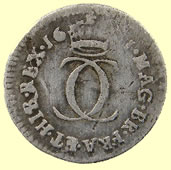
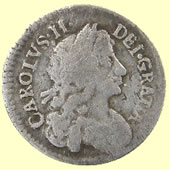
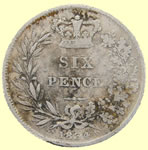
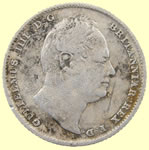





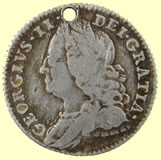



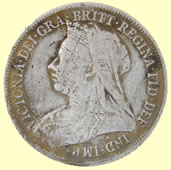

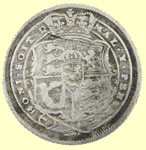
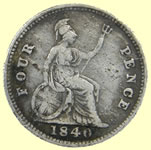
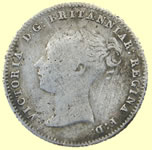
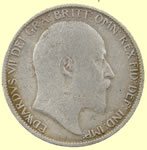







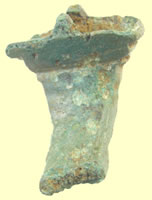
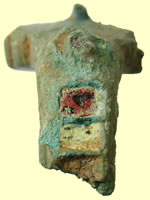
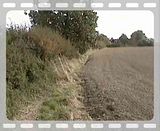
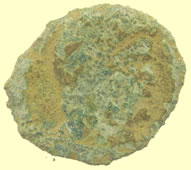
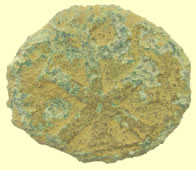
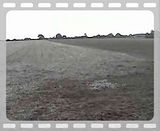



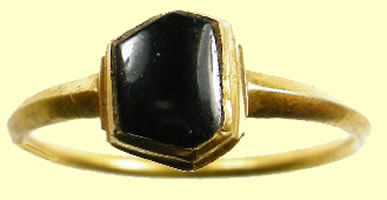
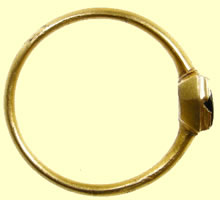
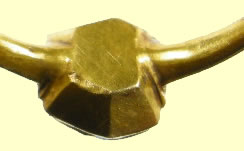
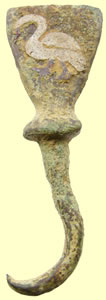


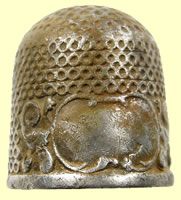
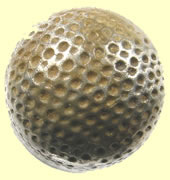
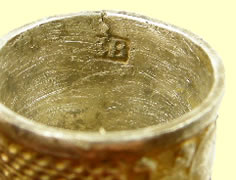

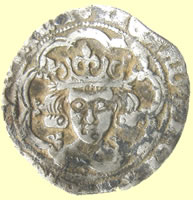
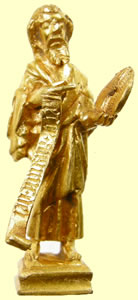
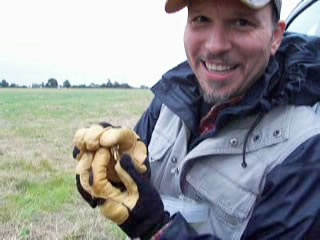
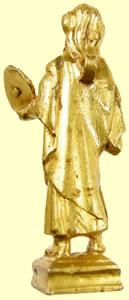







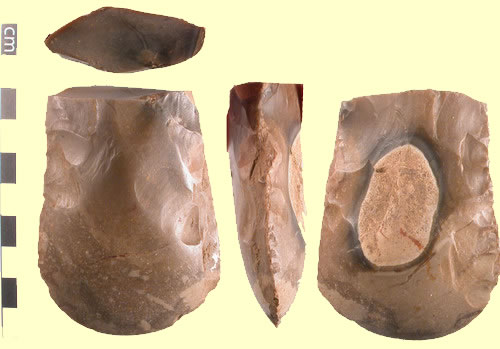


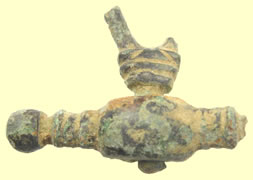







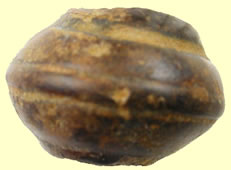
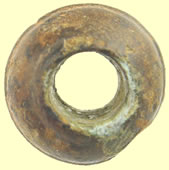
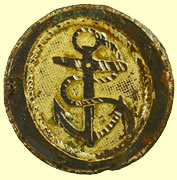

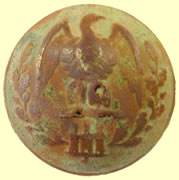

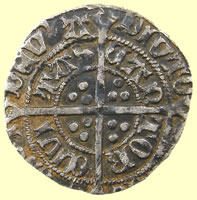




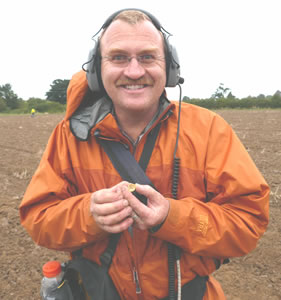
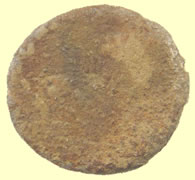
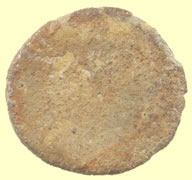
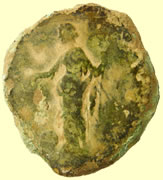
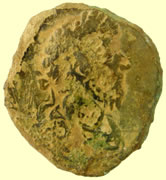
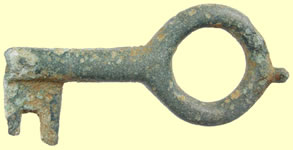



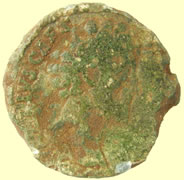

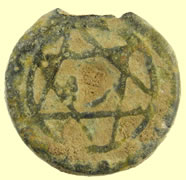
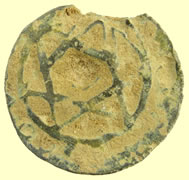



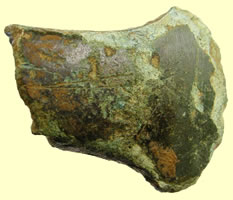
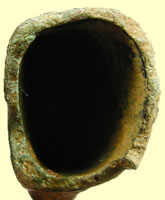

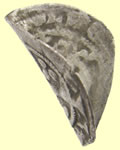

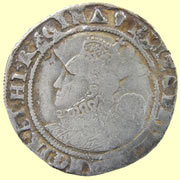
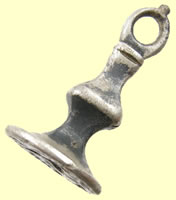
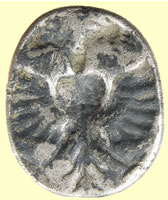


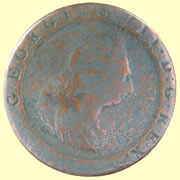
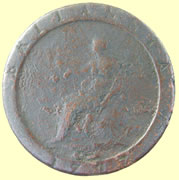

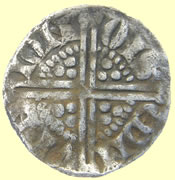
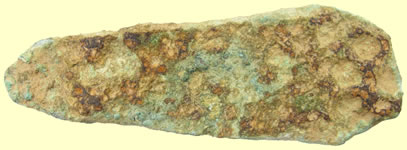

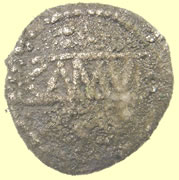
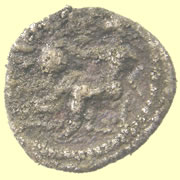
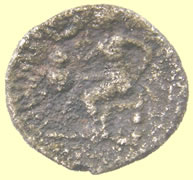
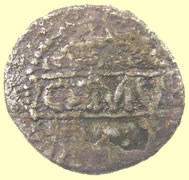
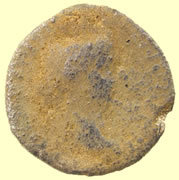





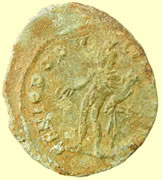
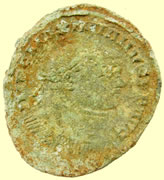




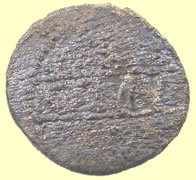


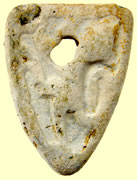
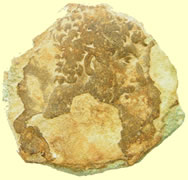

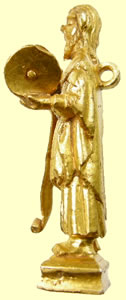



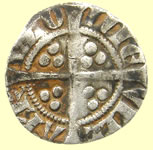

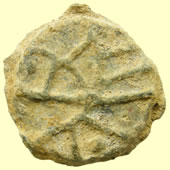
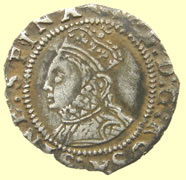
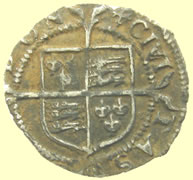
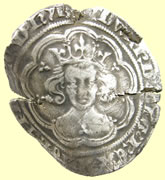
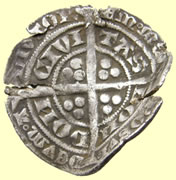
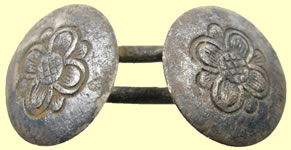



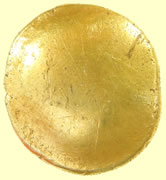
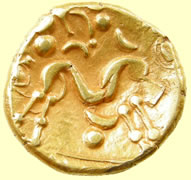


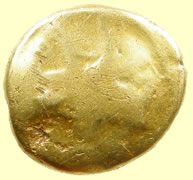
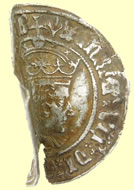

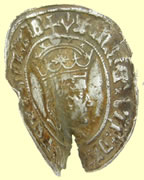

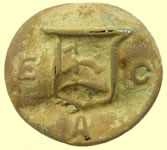
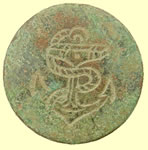
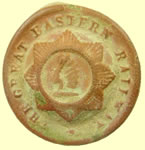
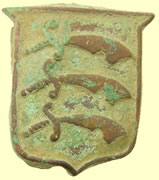

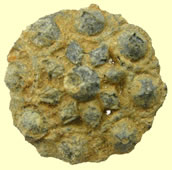
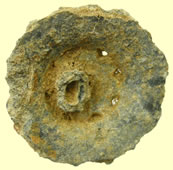

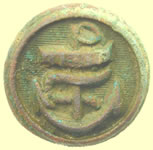


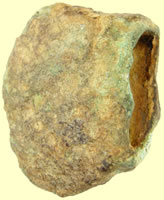
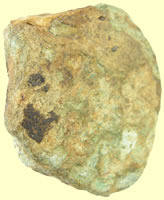
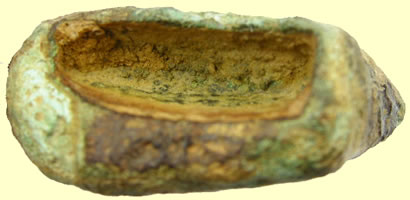

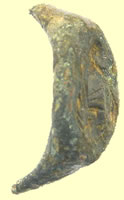


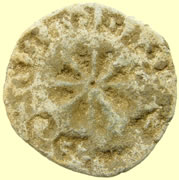
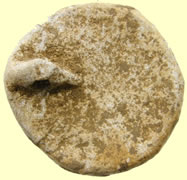
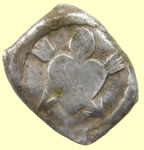 Canadian Dan is on fire this trip and got his 2nd gold item of the week, this time an early pure gold ring. I have sent it off to Colchester museum as potential treasure as it appears to be very early and hand made. His wife Marjo also found another treasure of a Charles II 17thC silver heart and flames button (1.19g, 14.67mm). We have found several of these in the past that are now on display in Colchester museum.
Canadian Dan is on fire this trip and got his 2nd gold item of the week, this time an early pure gold ring. I have sent it off to Colchester museum as potential treasure as it appears to be very early and hand made. His wife Marjo also found another treasure of a Charles II 17thC silver heart and flames button (1.19g, 14.67mm). We have found several of these in the past that are now on display in Colchester museum.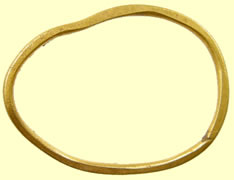
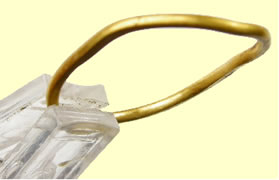
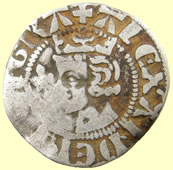
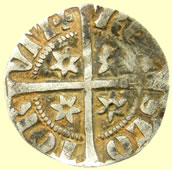
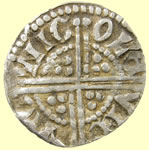
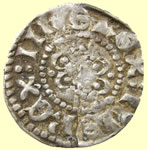



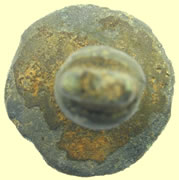

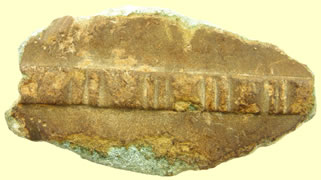
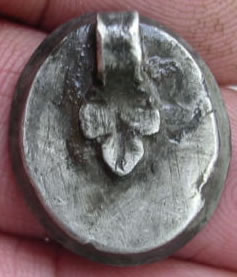
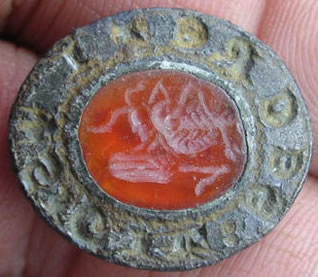


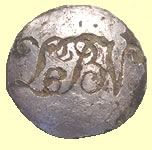
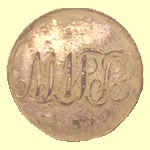
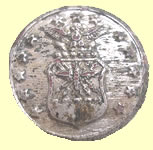
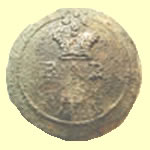

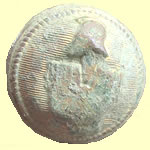


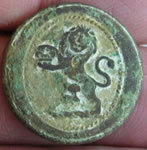
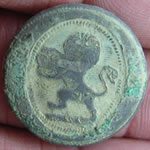
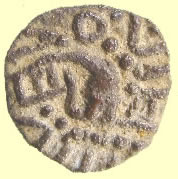

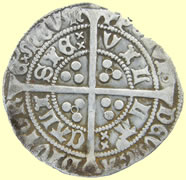



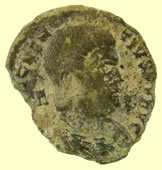
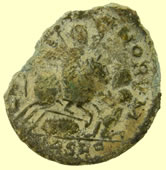
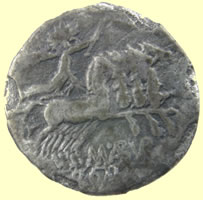

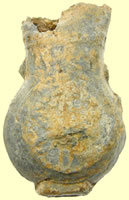

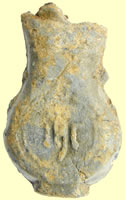
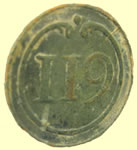
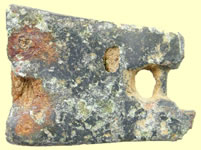
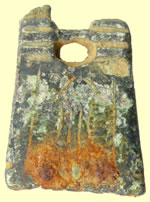
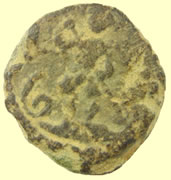
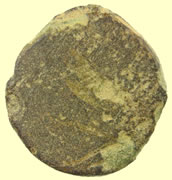
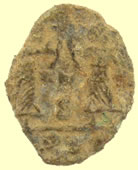

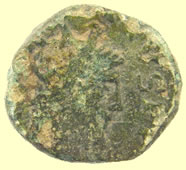
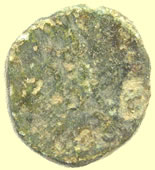
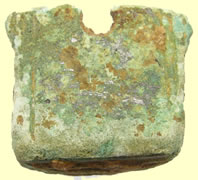
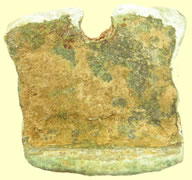
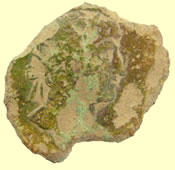
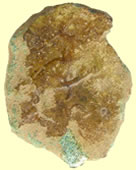
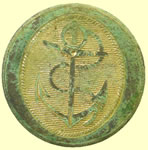
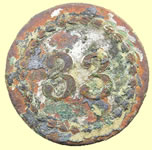
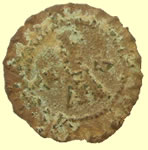
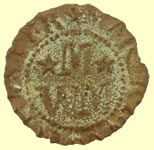
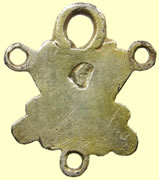
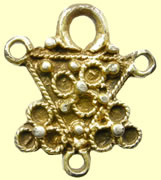
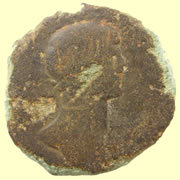
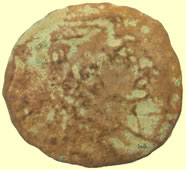
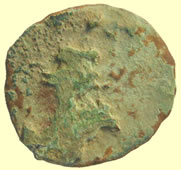


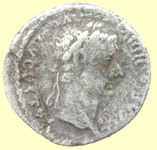
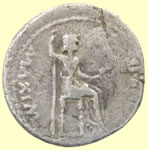

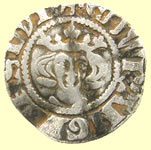




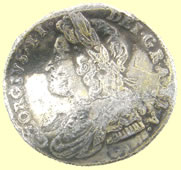
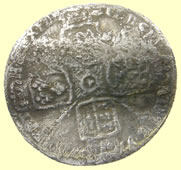
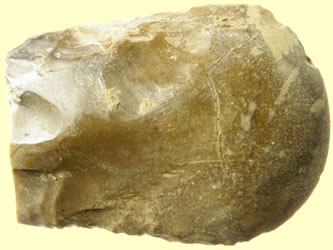
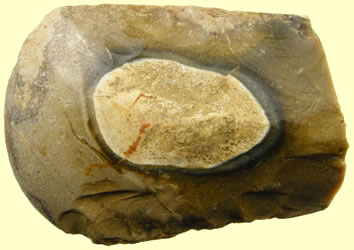
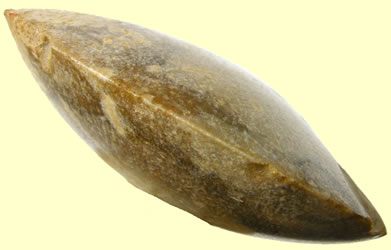

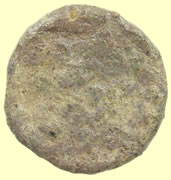

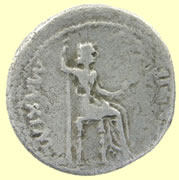
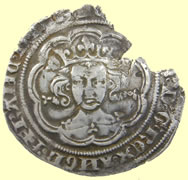
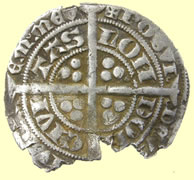


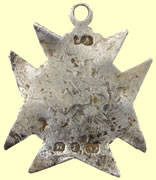
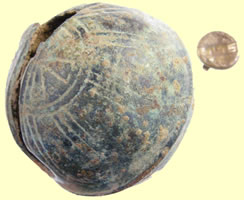
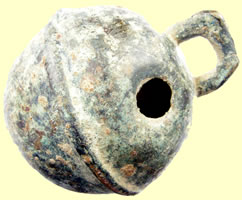


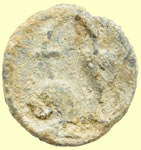
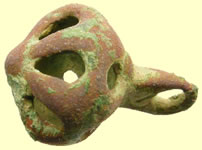

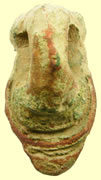

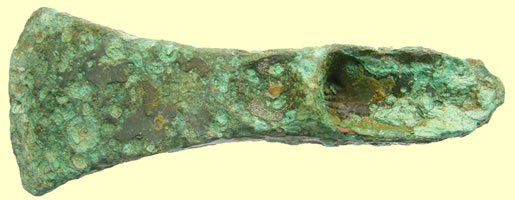
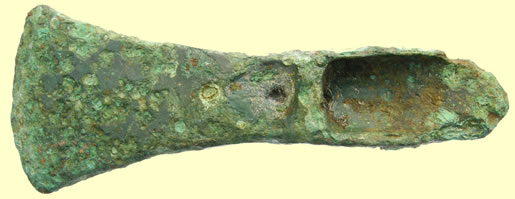

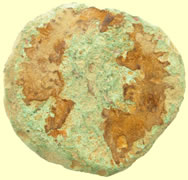
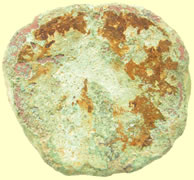
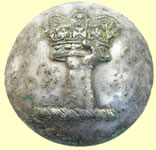
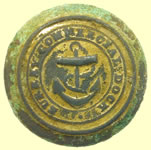
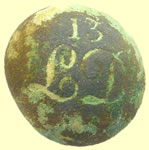
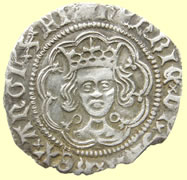
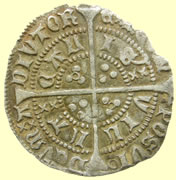
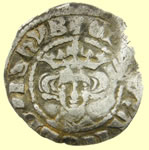
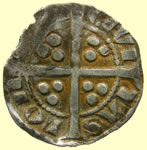
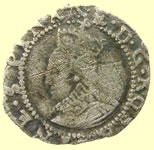
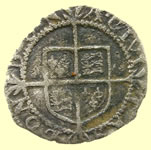
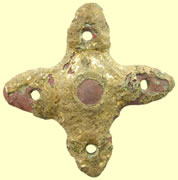
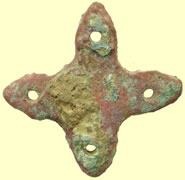
.jpg)
.jpg)
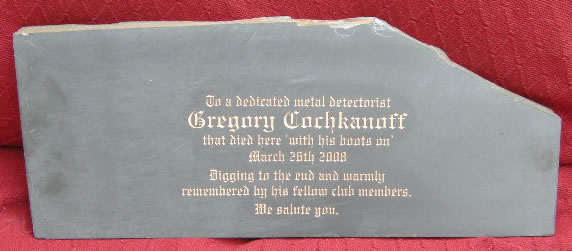
.jpg)
.jpg)
.jpg)

